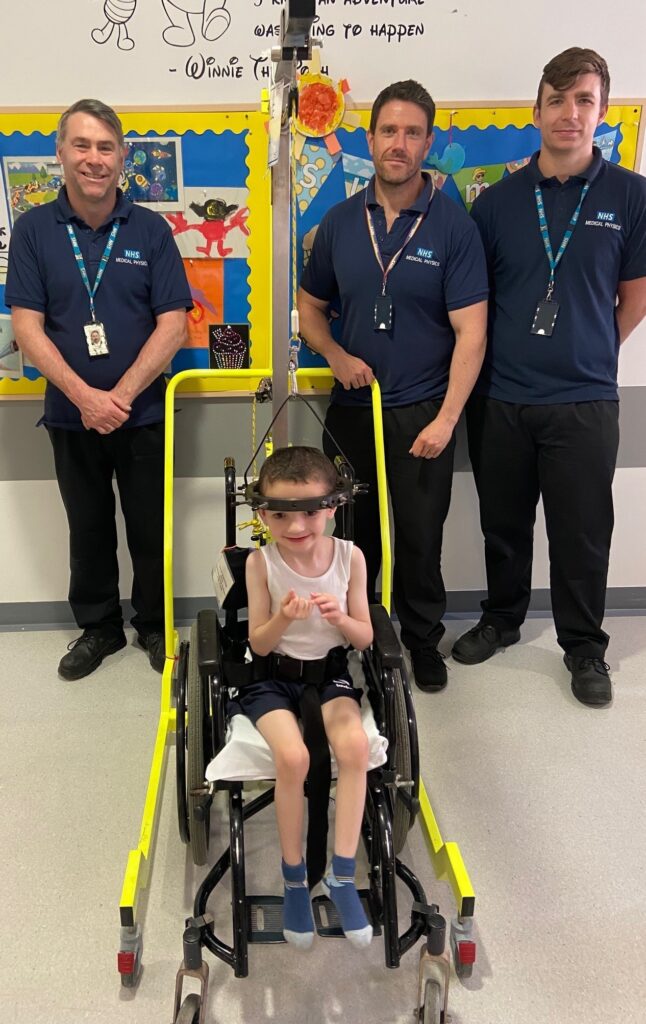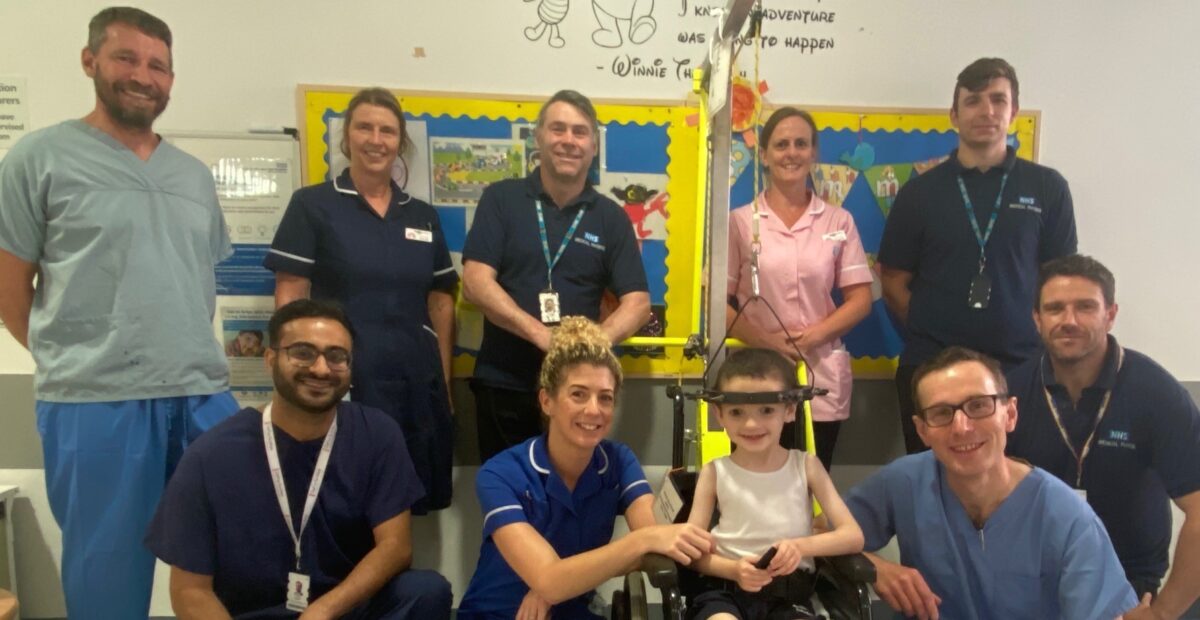Project
Teams at Newcastle Hospitals designed and built a unique device which supports life-changing surgery in children with severe curvature of the spine (scoliosis).
The halo gravity traction device was designed at the request of spinal surgeon Mr Paul Rushton and occupational therapists at Newcastle’s Royal Victoria Infirmary. The aim of traction is to gradually straighten the spine as much as possible before surgery.
Halo gravity traction is only used for the most severe of spinal deformities so ‘off the shelf’ options are not available. The treatment is used quite commonly in North America but in few centres in the UK.
The bespoke device was designed, tested and manufactured in just under six months by the Newcastle Hospitals regional technical aid service and mechanical engineering services. It was led by Stuart Duffy, head of service for the regional technical aid service.

What this means for staff
The halo traction gravity device makes it easier for clinical colleagues to enhance what they can do manage this difficult treatment. Without the halo device the patient’s movement is restricted as they remain still in bed whilst undergoing traction.
How this benefits patients
The device provides the following benefits and improvements on what is currently limitedly available:
- The device is interchangeable between the patient’s wheelchair and walking frame, allowing much needed physiotherapy.
- Traction loads are administered via a ‘sliding carriage’, meaning the weights used to straighten the spine travel with the patient when they move their head, applying a constant force in a safe manner.
Kyle, 4, received the halo traction device during a long stay in hospital.
Seeing Kyle with this new device has been a dream come true.
“He gets anxious when he is in traction on the bed but as soon as he can get up and move around he’s so happy and smiley.
“I was worried about it at first, but despite the nerves it has been amazing.
“I would recommend it to other families in our position. I can’t thank the team enough.”
Mum Kerry Brookes.
How we helped
Charlotte Fox from our innovation team investigated the commercial potential of the halo device, prior to agreeing the creative commons license route to share technical information with other hospitals and specialist sites.
We also supported with discussions around funding for follow on devices, multiples of the original but slightly redesigned.
Next steps
Great Ormond Street Hospital and other specialist sites have shown interest in the device, and work is underway to share the technical files.
If you have an idea for a device or technology to support staff and patients please contact the teams via the following emails [email protected] or [email protected]
What would you say to colleagues who have an idea to develop?
The innovation team can give specialist support to source funding to develop ideas, and to connect innovators to services like ours and also commercial partners.
“Their work covers feasibility studies, market research, funding streams and commercialisation possibilities and Charlotte has been a great support for us.”
Stuart Duffy, head of service for the regional technical aid service

Testimonials
“Severe scoliosis in this age group is very challenging to treat.
“Traction has been shown to be successful in selected patients, however, it takes around four to six weeks to have an effect.”
“This fantastic device works very effectively allowing traction to be applied whilst patients mobilise in a walker or a wheelchair.”
Mr Paul Rushton, spinal surgeon at Newcastle Hospitals

